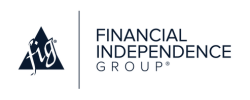Explore six essential strategies crafted to empower and guide clients toward a brighter financial future through tailored education, interactive engagement, and ongoing support.
Picture this: a world where every individual has the knowledge and confidence to navigate their finances with ease, where making informed decisions about money isn’t just a privilege but a basic right. Welcome to Financial Literacy Month – a time dedicated to empowering individuals with the tools they need to secure their financial futures.
Financial Literacy Month isn’t just another page on the calendar. It’s a beacon of light in the often murky waters of personal finance, shining a spotlight on the importance of understanding money matters. It’s an opportunity for clients to gain clarity, confidence, and control over their financial destinies. But here’s the catch: they can’t do it alone.
As a financial professional, you’re an educator, mentor, and advocate for financial well-being. In a world where financial literacy can mean the difference between prosperity and struggle, advisors play a pivotal role in guiding their clients toward financial enlightenment.
The Importance of Financial Literacy
In a world bombarded by financial choices, from investments to insurance, understanding the language of money isn’t just advantageous – it’s essential. Financial literacy isn’t just about balancing a checkbook or understanding compound interest. It’s about empowering individuals to make informed decisions about their finances today and in the future.
Financial literacy lays the foundation for long-term financial stability. It’s not just about surviving paycheck to paycheck; it’s about thriving, building wealth, and achieving financial freedom. By understanding concepts like saving, investing, and retirement planning, individuals can chart a course toward a brighter financial future, one where they call the shots and live life on their own terms.
Strategies for Educating Clients During Financial Literacy Month
Tip #1: Tailor Content to Client Needs
One size doesn’t fit all when it comes to financial education. Each client comes to the table with unique financial knowledge, goals, and concerns. As a financial professional, your role is to meet them where they are and provide tailored guidance that speaks to their individual needs.
The first step? Assessing clients’ current financial knowledge. Whether they’re seasoned experts or financial novices, understanding where clients stand on the financial literacy spectrum is crucial. From there, you can customize educational materials and sessions accordingly, ensuring you’re not overwhelming them with the information they already know or leaving critical gaps in their understanding.
By honing in on what matters most to your clients, we can deliver targeted guidance that resonates on a personal level, driving home the importance of financial literacy in achieving their aspirations.
Tip #2: Utilize Various Communication Channels
In today’s digital age, communication is key – especially when educating clients about financial literacy. Gone are the days of relying solely on face-to-face meetings or phone calls. Instead, savvy financial professionals are leveraging diverse communication channels to reach their clients where they are and deliver valuable insights in a format that resonates.
Leveraging Social Media Platforms
Social media is a powerful tool for disseminating financial knowledge far and wide. Whether it’s posting informative articles, hosting live Q&A sessions, or sharing bite-sized tips and tricks, social media platforms like Facebook, LinkedIn, and Twitter offer unparalleled reach and engagement potential.
Host Webinars or Events
In a world where time is a precious commodity, webinars and events offer a convenient way for clients to deepen their financial knowledge without ever leaving the comfort of their homes. From retirement planning seminars to investment masterclasses, these virtual events provide a platform for interactive learning, real-time engagement, and personalized guidance.
Send Newsletters or Email Campaigns
In the age of overflowing inboxes, it’s easy for emails to get lost in the shuffle. But when done right, newsletters and email campaigns can be a powerful tool for delivering targeted financial insights directly to clients’ fingertips. Whether it’s a monthly roundup of market trends, a quarterly financial check-in, or a timely reminder about upcoming tax deadlines, email remains a tried-and-true communication channel for staying connected with clients.
Tip #3: Make It Interactive and Engaging
By infusing a healthy dose of interactivity and engagement into our educational efforts, you can transform even the most complex financial concepts into digestible nuggets of wisdom that capture your clients’ attention and spark their curiosity.
Incorporate Quizzes or Interactive Tools
Who says learning can’t be fun? Incorporate quizzes, interactive calculators, and other gamified elements into your educational materials and you can transform passive learning into an engaging and interactive experience. Whether it’s testing their knowledge of investment principles or helping them calculate their retirement savings goals, interactive tools provide a hands-on way for clients to deepen their understanding of key financial concepts.
Host Q&A Sessions or Discussion Forums
Sometimes, the best way to learn is by asking questions. By hosting regular Q&A sessions or discussion forums, you create a safe and supportive space for clients to voice their concerns, share their experiences, and seek clarity on financial matters that matter most to them. Whether it’s clarifying the intricacies of tax planning or demystifying the world of cryptocurrencies, these interactive sessions foster dialogue, collaboration, and mutual learning.
Share Real-Life Examples and Case Studies
Theory is one thing – but real-world examples are where the rubber meets the road. By sharing relatable stories, case studies, and success stories from your client base, we bring financial concepts to life in a way that resonates with them on a personal level.
These can highlight the benefits of proper estate planning or showcase the impact of disciplined savings habits, real-life examples provide concrete proof that financial literacy isn’t just an abstract concept – it’s a tangible pathway to a brighter financial future.
Tip #4: Empower Clients to Take Action
Knowledge is power – but only if it’s put into action. Your role doesn’t end with imparting knowledge; it extends to empowering clients to take decisive action towards their financial goals. From setting SMART financial goals to providing actionable steps and ongoing support, here are three strategies for empowering clients to take charge of their financial destinies.
Set SMART Financial Goals Together
The journey to financial success begins with a destination in mind. Working collaboratively with your clients to set SMART (Specific, Measurable, Achievable, Relevant, Time-bound) financial goals provides a clear roadmap for turning their dreams into reality.
Provide Actionable Steps and Resources
Goals are great – but without a plan of action, they’re little more than wishful thinking. It’s your job to break down lofty goals into manageable steps and provide clients with the tools, resources, and support they need to take meaningful action.
Follow-Up and Provide Ongoing Support
Rome wasn’t built in a day – and neither are financial success stories. Your role doesn’t end once the initial plan is in place; it extends to providing ongoing support, guidance, and accountability every step of the way. Whether it’s scheduling regular check-ins, monitoring progress towards goals, or adjusting strategies as needed, continued presence and support ensure that your clients stay on track and overcome any obstacles that may arise along the way.
Tip #5: Foster a Supportive Learning Environment
Knowledge is power, but learning can sometimes feel daunting. It’s not just your job to impart information; it’s your responsibility to create a supportive learning environment where clients feel empowered to ask questions, share their concerns, and celebrate their progress. Here are three strategies for fostering a culture of learning and growth:
Create a Judgment-Free Zone for Asking Questions
By creating a judgment-free zone where no question is too basic, you empower your clients to seek the clarity they need to make informed decisions about their finances.
Encourage Open Dialogue about Financial Concerns
Money matters can be deeply personal, and it’s not uncommon for clients to feel hesitant or embarrassed about discussing their financial concerns. It’s important to break down those barriers and foster an open, honest dialogue about money.
Celebrate Clients’ Progress and Achievements
Every milestone – no matter how small – deserves to be celebrated in the journey towards financial success. By shining a spotlight on their achievements, you not only recognize their hard work and dedication but also inspire them to continue striving toward their financial goals.
Tip #6: Encourage Continuous Learning Beyond Financial Literacy Month
Financial literacy isn’t just a once-a-year event – it’s a lifelong journey. This month, focus on empowering your clients to embrace continuous learning and personal growth, both inside and outside the realm of finance. Here are three strategies for fostering a culture of lifelong learning and empowerment:
Promote Ongoing Financial Education Opportunities
Provide a variety of educational opportunities, from workshops and seminars to online courses and self-study programs. Whether it’s learning about the latest investment trends, exploring options for estate planning, or delving into the nuances of tax law, there’s always something new to discover on the journey toward financial enlightenment.
Schedule Regular Check-Ins to Review and Update Financial Plans
It’s essential to schedule regular check-ins to review and update their financial plans as needed. Whether it’s a major life event like getting married or having a baby or simply a shift in priorities or circumstances, these check-ins provide an opportunity to reassess goals, adjust strategies, and ensure that your client’s financial plans remain aligned with their evolving needs and aspirations.
Reinforcing the Importance of Lifelong Learning
By reinforcing the importance of lifelong learning, you encourage your clients to take ownership of their financial futures and invest in their own personal growth and development. Whether it’s reading books, attending seminars, or participating in online forums, pursuing knowledge is a lifelong journey that enriches our minds and lives.
Throughout this month, financial professionals play a vital role as educators, guides, and advocates for their clients’ financial well-being. By tailoring content to individual needs, leveraging various communication channels, and fostering supportive learning environments, you empower your clients to take control of their financial destinies.
Even beyond this month, continue to promote ongoing financial education, embrace new technologies and communication channels, and foster a culture of lifelong learning and empowerment. In the end, the true impact of financial literacy education lies not in the numbers on a balance sheet but in the lives transformed, the dreams realized, and the futures secured.



